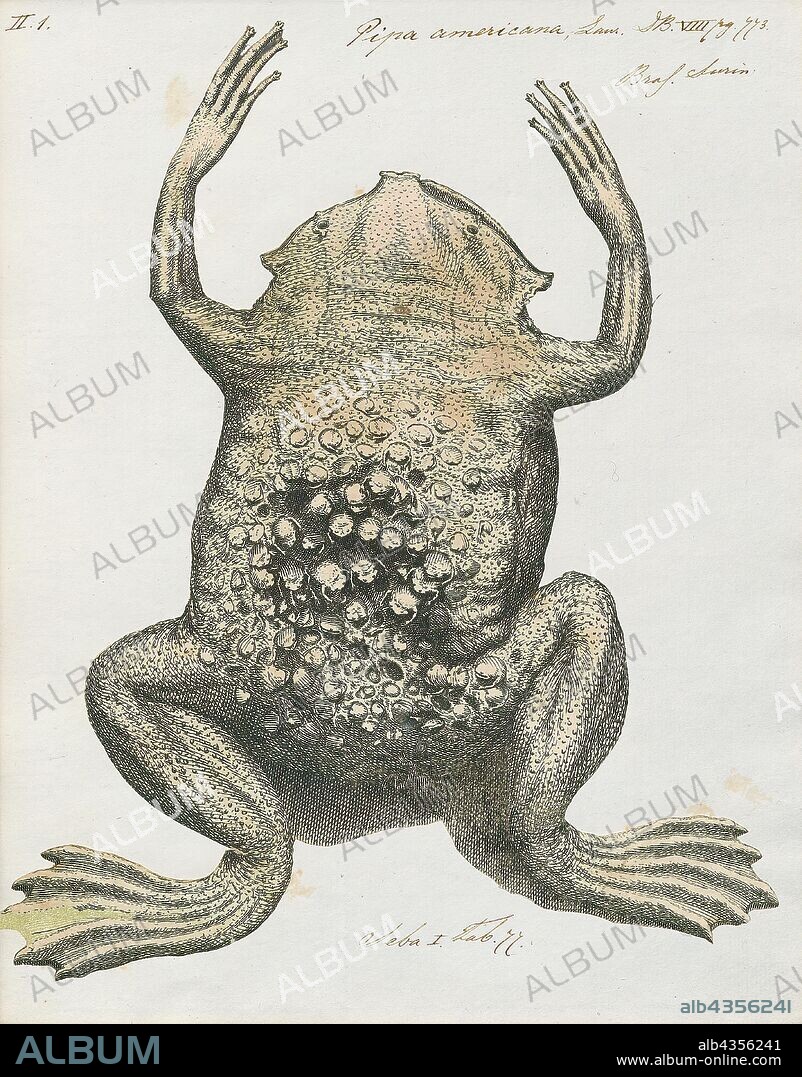alb4356241
Pipa americana, Print, The common Suriname toad or star-fingered toad (Pipa pipa) is a species of frog in the family Pipidae found in Bolivia, Brazil, Colombia, Ecuador, French Guiana, Guyana, Peru, Suriname, Trinidad and Tobago, and Venezuela. In Spanish it is called aparo, rana comun de celdillas, rana tablacha, sapo chinelo, sapo chola, or sapo de celdas. In Portuguese, it is known as sapo pipa due to its shape, as "pipa" means kite. Its natural habitats are subtropical or tropical moist lowland forests, subtropical or tropical swamps, swamps, freshwater marshes, and intermittent freshwater marshes. It is threatened by habitat loss., 1700-1880.

|
Zu einem anderen Lightbox hinzufügen |
|
Zu einem anderen Lightbox hinzufügen |



Haben Sie bereits ein Konto? Anmelden
Sie haben kein Konto? Registrieren
Dieses Bild kaufen

Untertitel:
Siehe automatische Übersetzung
Pipa americana, Print, The common Suriname toad or star-fingered toad (Pipa pipa) is a species of frog in the family Pipidae found in Bolivia, Brazil, Colombia, Ecuador, French Guiana, Guyana, Peru, Suriname, Trinidad and Tobago, and Venezuela. In Spanish it is called aparo, rana comun de celdillas, rana tablacha, sapo chinelo, sapo chola, or sapo de celdas. In Portuguese, it is known as sapo pipa due to its shape, as "pipa" means kite. Its natural habitats are subtropical or tropical moist lowland forests, subtropical or tropical swamps, swamps, freshwater marshes, and intermittent freshwater marshes. It is threatened by habitat loss., 1700-1880
Bildnachweis:
Album / quintlox
Freigaben (Releases):
Model: Nein - Eigentum: Nein
Rechtefragen?
Rechtefragen?
Bildgröße:
3654 x 4665 px | 48.8 MB
Druckgröße:
30.9 x 39.5 cm | 12.2 x 15.5 in (300 dpi)
Schlüsselwörter:
 Pinterest
Pinterest Twitter
Twitter Facebook
Facebook Link kopieren
Link kopieren Email
Email
